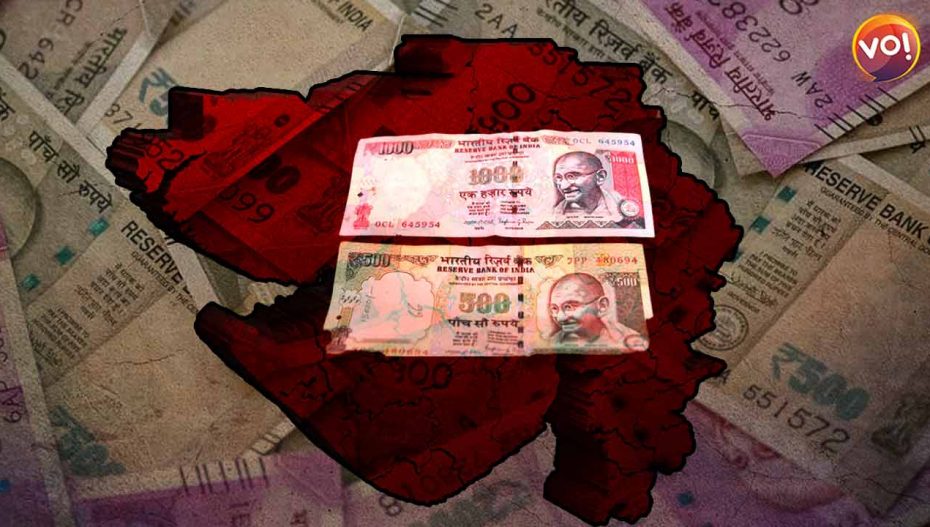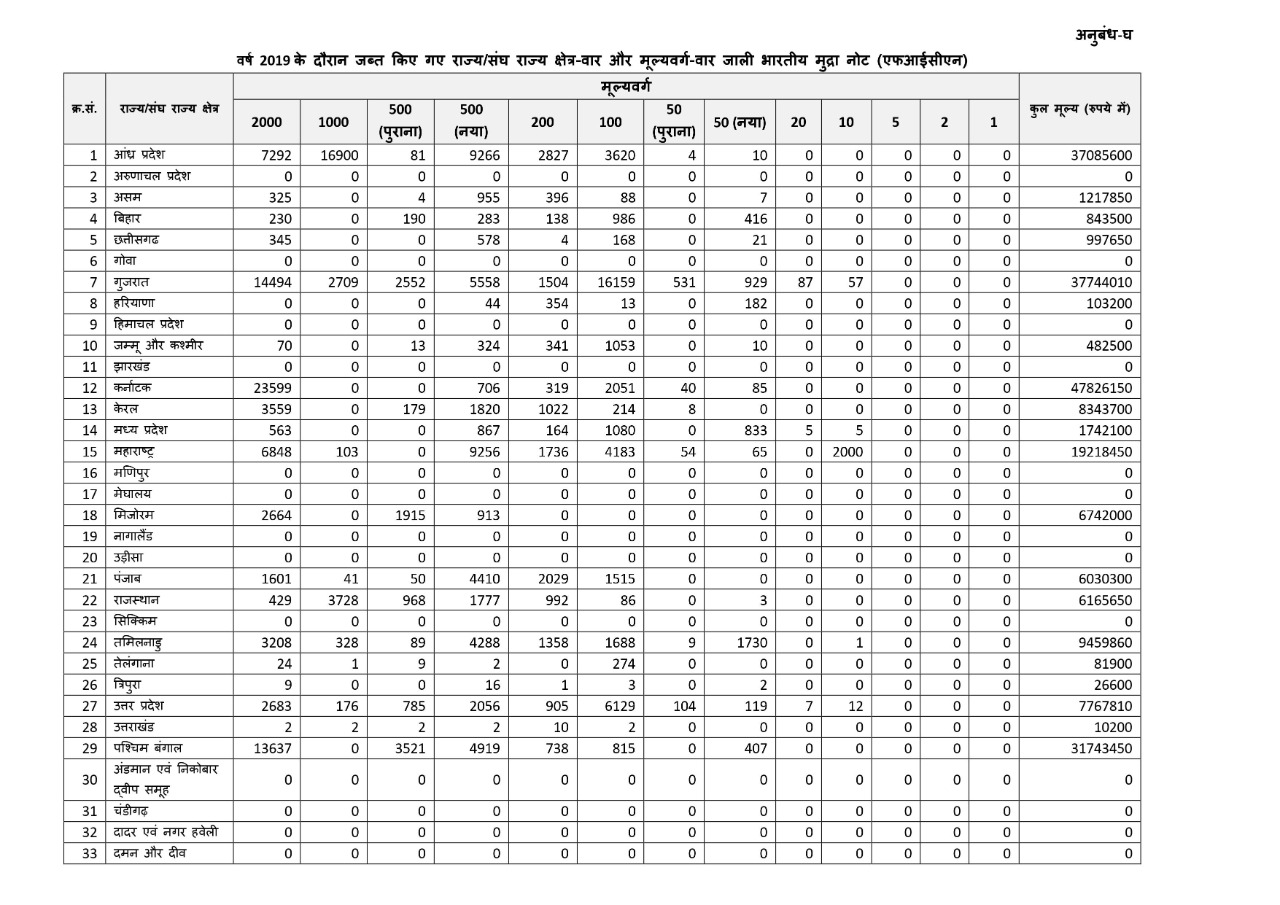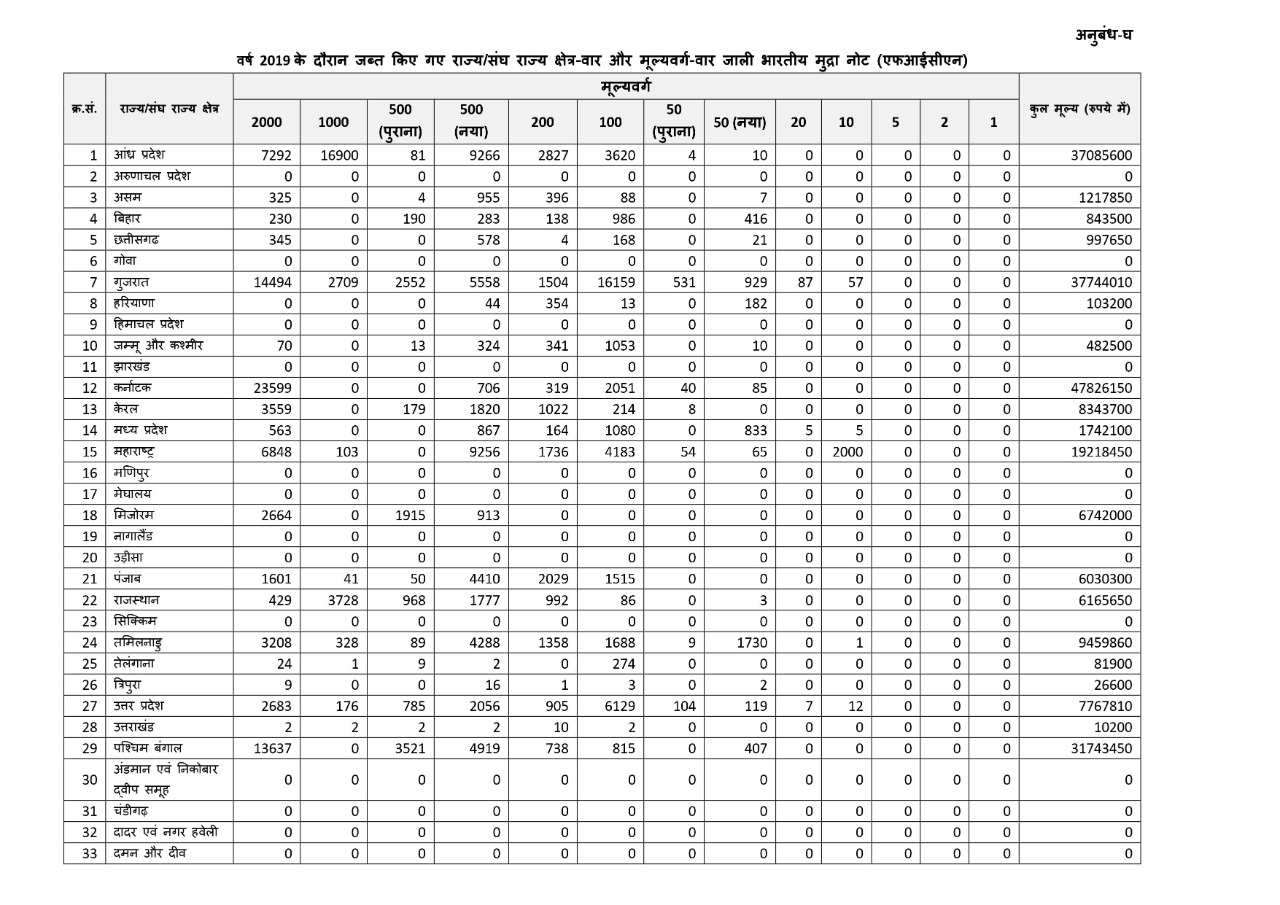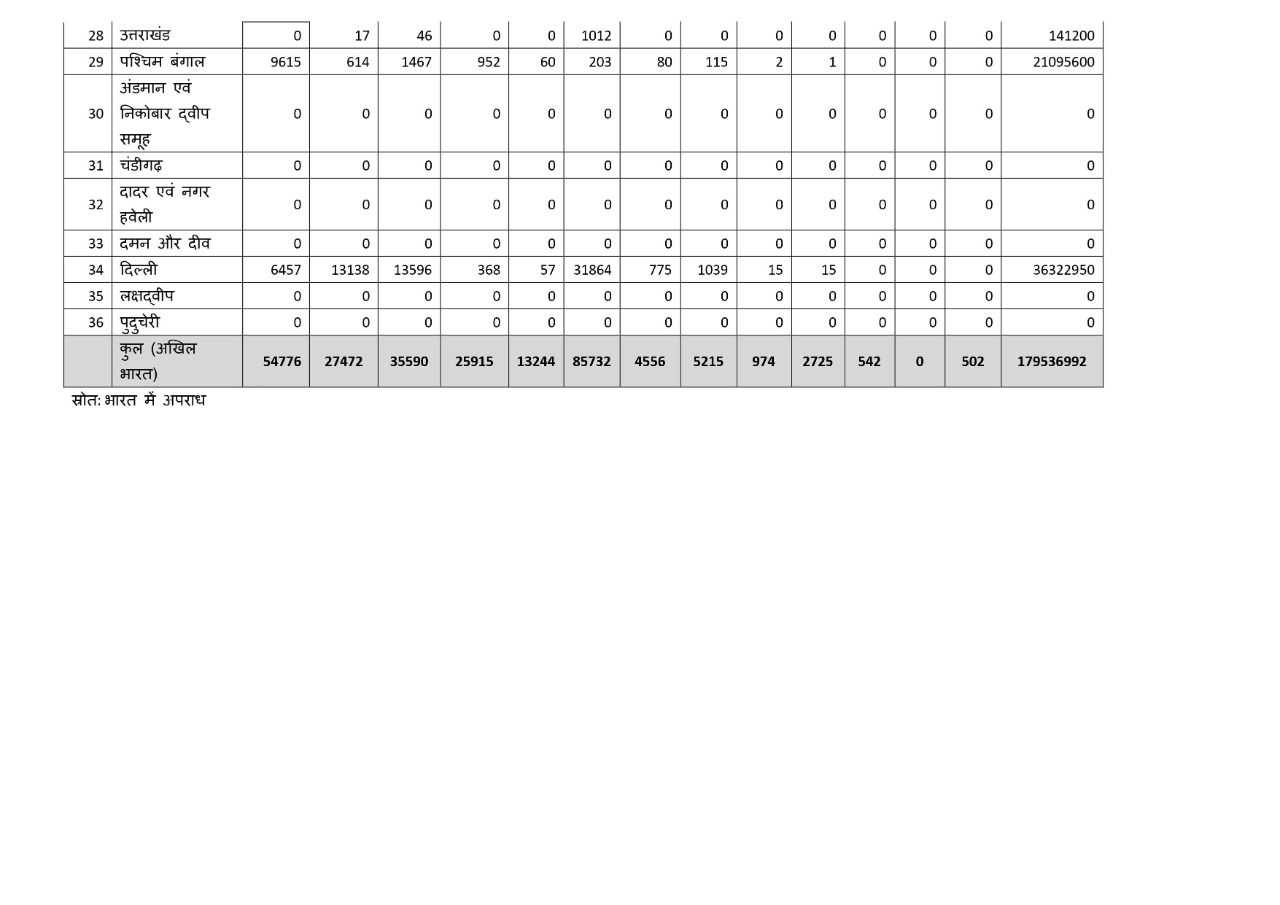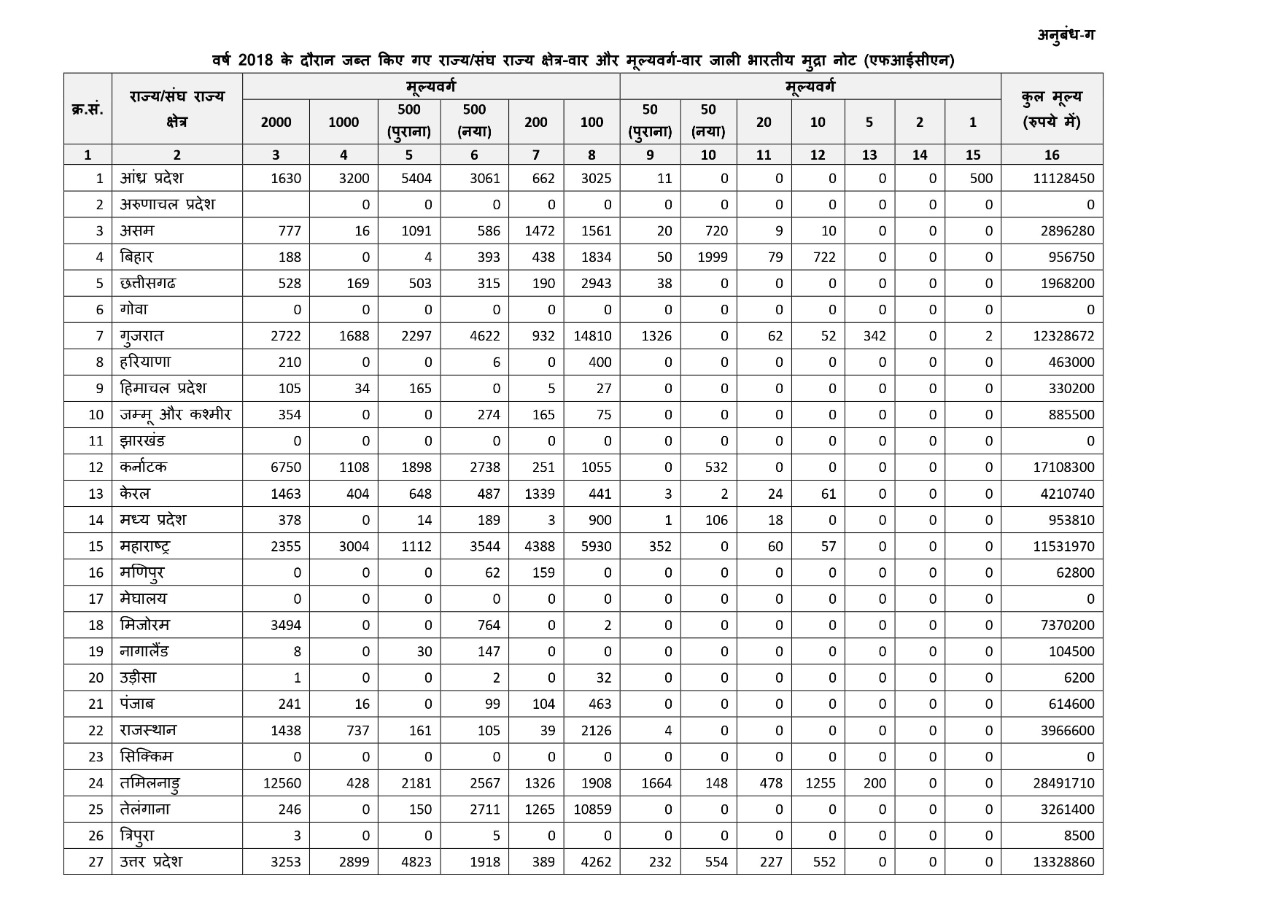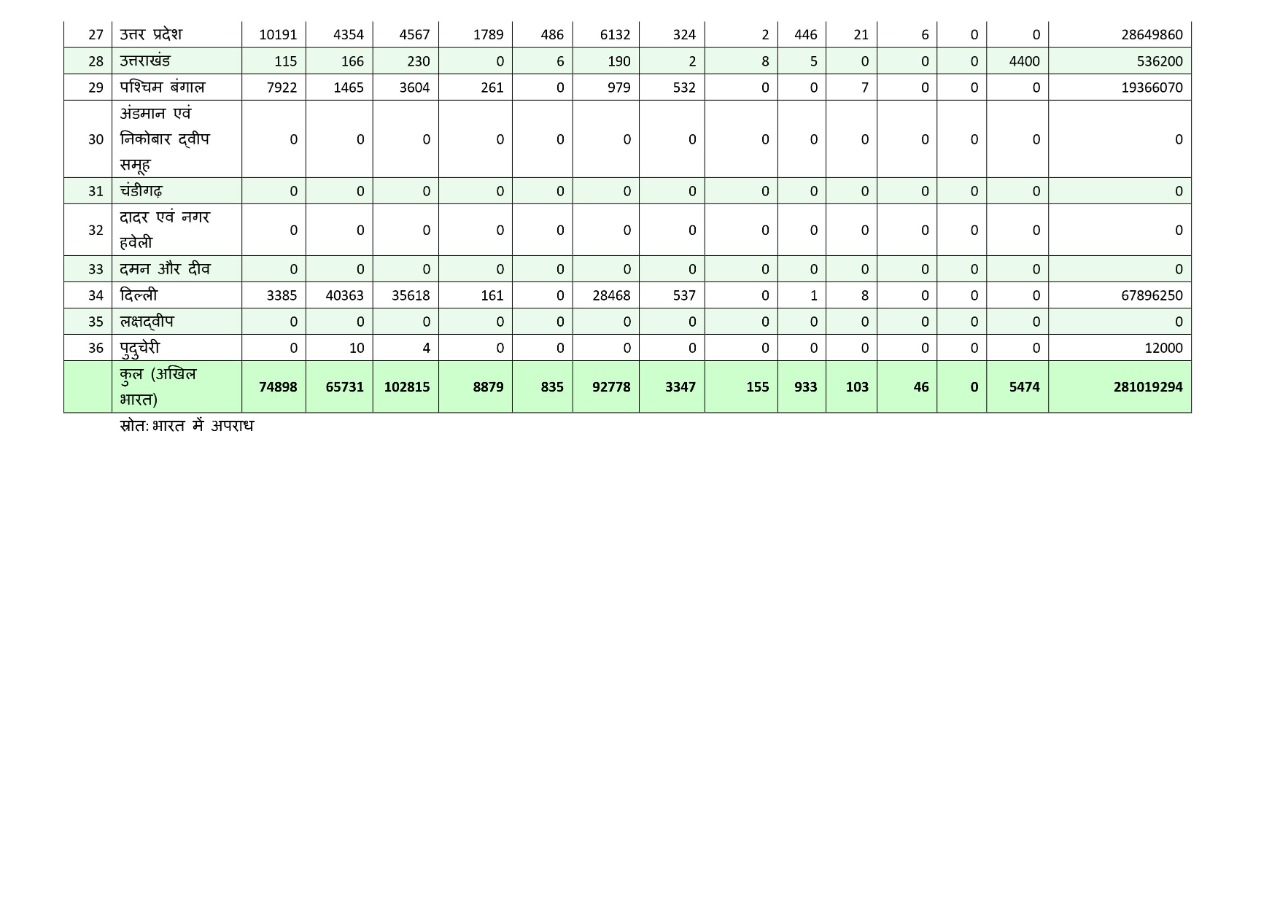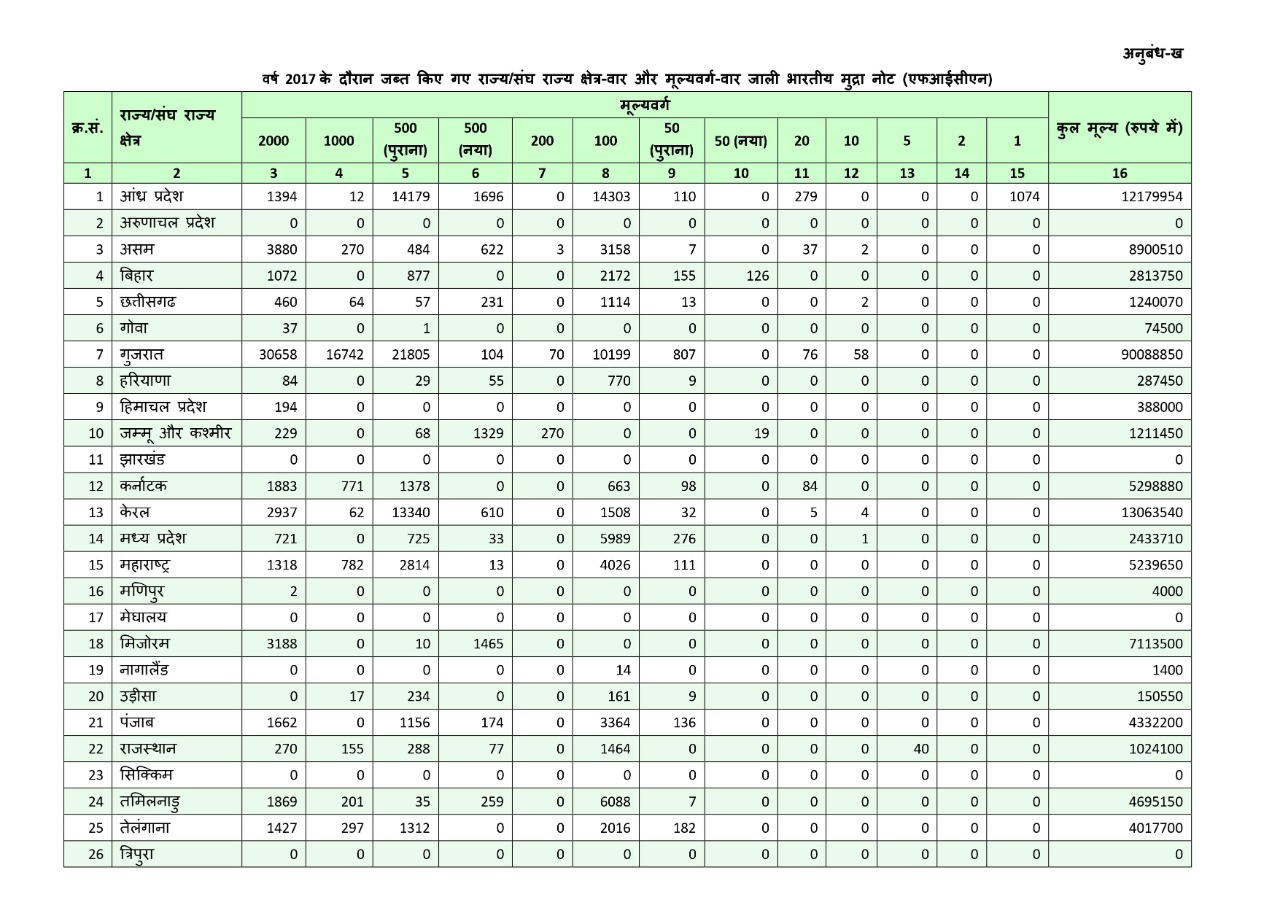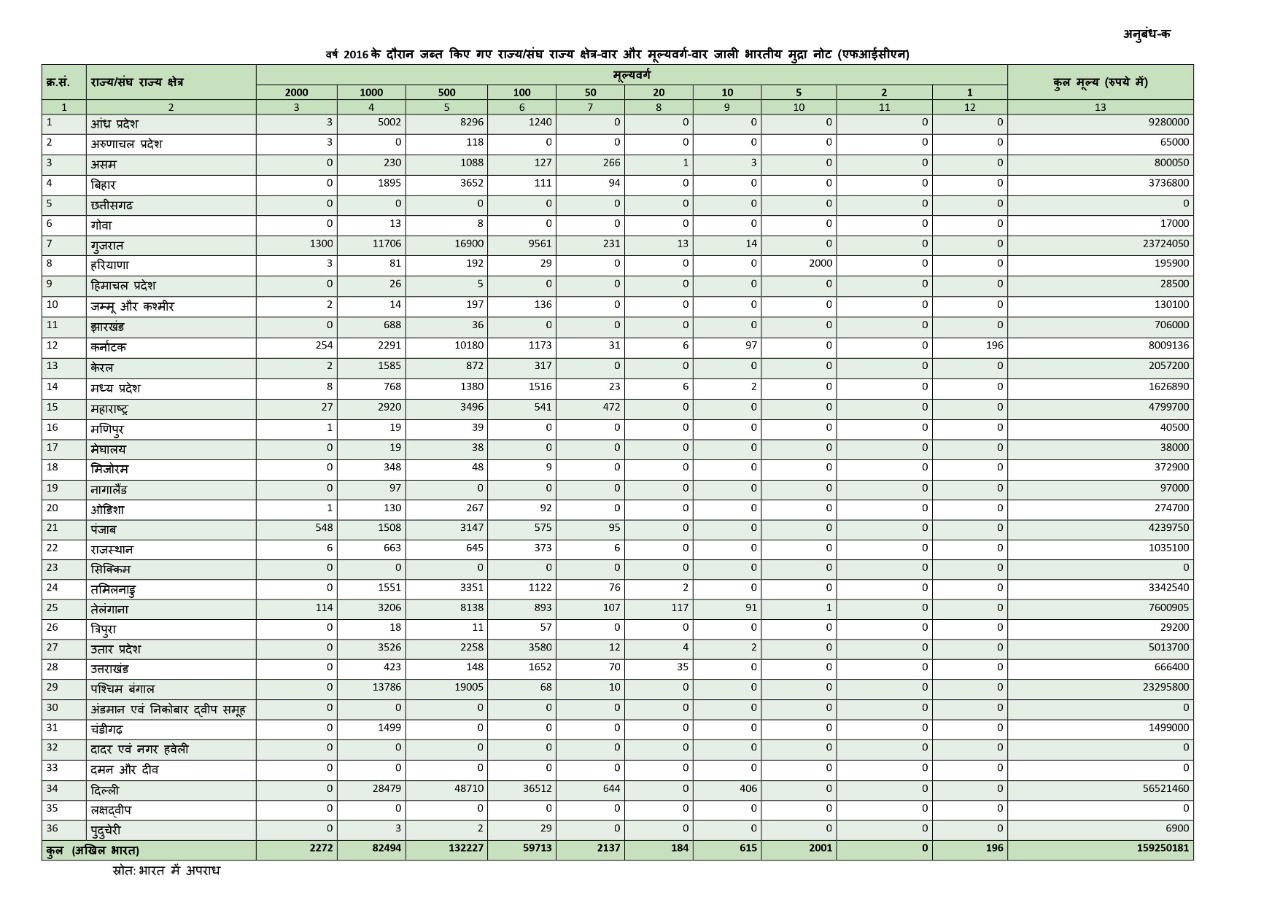Gujarat has topped the list of the most number of high denomination fake notes seized in India. According to official data, the government seized notes worth ₹23,724,050 from Gujarat state in the year 2016.
In a recent update, the officials confiscated around ₹159,250,181 notes from Gujarat, which is believed to be the highest in the country. Thus, out of every seven currencies seized, one belonged to the state of Gujarat. West Bengal came next with ₹23,295,800, followed by the southern state of Andhra Pradesh with ₹9,280,000. Further, Delhi topped the city-based list with ₹56,521,460 seized currencies.
Way back in 2016, to bring in transparency in all of the economic activities and to do away with black and grey markets flourishing within the country, Prime minister Narendra Modi announced ‘demonetisation of rupees 500 and 1000-Gandhi series notes. He had a clear intention of putting an end to the circulation of black money, hoarding, terrorism and Naxalism, a few of the major socio-economic factors, hampering the progress and development of the country. People severely criticized and held demonstrations against demonetisation across India, as it hit hard on the livelihood of the marginalised groups and middle-class families.
Today, Gujarat and Delhi jointly accounted for every other counterfeit note from the states. In Naxal-affected states, Chhattisgarh, the figure is considered to be zero; other states like Sikkim, Andaman & Nicobar Islands, Daman and Diu, and Lakshadweep are all free from such money hoardings.
The nation saw an increase in over 90 percent of fake notes after demonetisation. In the year 2017, the government officials retained ₹281,019,294 faked notes from across India, out of which ₹90,088,850 was just from Gujarat. It implies that every fourth counterfeit currency was from Gujarat. In this lot, the number of 500 and 1000 discontinued notes was 16742 and 21805, valued at ₹27,644,500. Thus, one-third of the notes seized from Gujarat belonged to the demonetised faction. The government recovered notes worth ₹1211450 from the northern state of Jammu & Kashmir, while they found zero fake currencies in Naxal-hit areas of Jharkhand.
To add more to the data on fake notes and currencies blooming across India: the number of counterfeit notes from Delhi in 2017 was around ₹67,896,250; States with worth more than one crore rupees of counterfeit notes included: Andhra Pradesh, Kerala, Uttar Pradesh and West Bengal; and Arunachal Pradesh, Jharkhand, Meghalaya, Sikkim, Tripura, Andaman Islands, Daman and Diu, Lakshadweep, Chandigarh, Dadra Nagar Haveli, Pondicherry were listed among those states with no counterfeited notes.
In 2018, the government officials retained approximately ₹179,536,992 fake notes from India, of which Gujarat’s contribution was ₹12,328,672. However, Tamil Nadu topped the chart with the maximum number of fake notes worth ₹28,491,710. Uttar Pradesh was found to be next with ₹13,328,860 and Gujarat to be at third place. However, eleven states had no counterfeit currencies, that included most of the union territories and north-eastern states of India. From the Delhi-NCR regions, the government retained notes worth ₹36,322,950.
The official data from 2019 says that the value of faked notes from Gujarat was found to be ₹37,744,010. However, in 2020, the number of counterfeit notes seized from all across the nation decreased to ₹9,21,78,048, and with this, Gujarat’s acquisition in terms of counterfeit currency & notes came down to ₹8,796,490. But still, the officials continued to find the discontinued notes from all over the country. In militancy-hit states and north-eastern states, the recovery continued to be zero.
In its annual report (2018-19), RBI clearly mentioned an increase of 20.2 per cent, 87.2 per cent and 57.3 per cent counterfeit notes detected in the denominations of rupees 10, 20 & 50 in its respective order.
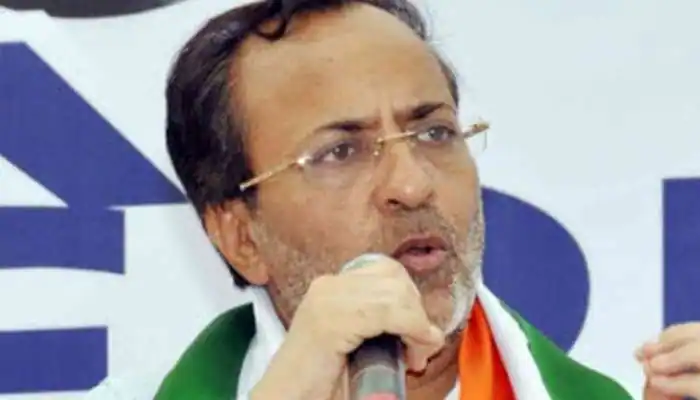
Arjun Modhwadia, former Gujarat Congress President, while speaking to the Team Vo! said, “There are more counterfeit notes in Gujarat than what we have found. It’s a question of why people keep old-discontinued notes even after demonetisation. This is a big concern for the Gujarat government and all the states where such activities are actually proliferating. But the government has achieved some other undeclared aims (which were far beyond to be attained).”

Team Vo! also tapped in with Dr S. Srinivasa Rao, Head of the Department of Economics at Veer Narmad South Gujarat University and the author of two books on Public Finance. “Demonetisation has nothing to do with Naxalism and terrorism. The fake and old notes in circulation cause direct loss of revenue for the country” – said, Dr Rao.
According to Dr Rao, the reason behind this hard fact that makes Gujarat and Delhi easy scapegoats in the existence of counterfeit currency & notes is- people paying wages in cash to all the day labourers working at the construction sites or for part-time errands.
Moreover, Dr Yamal Vyas, Chief BJP Spokesperson, said, “Gujarat Police took action and caught fake notes. It is good to see Gujarat Police so alert.”
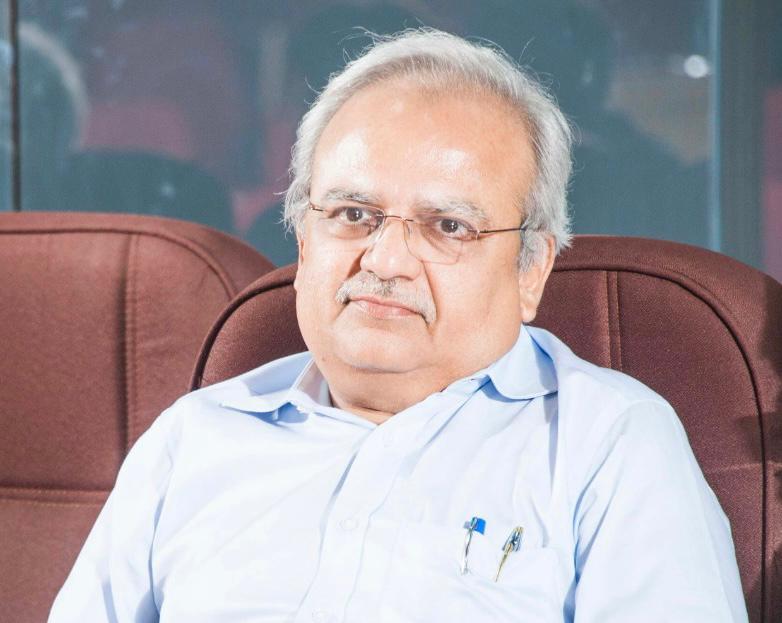
Further, Vibes of India tried to reach State Home Minister Harsh Sanghavi, but there was no response.
Counterfeiting currency notes is one of the major crimes entitled under Section-489 of the IP Code. Production and possession of such fake currencies and notes can lead to severe punishment with heavy penalties.
Also Read Gujarat: Fake Note Racket Busted, Gold Biscuits Seized In Bhuj


